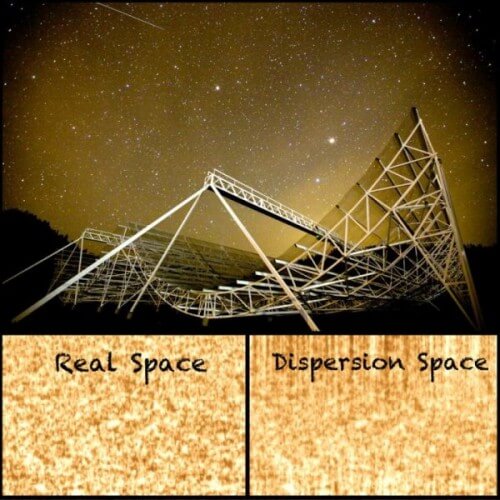Researchers propose a new way to measure distances in deep space by detecting mysterious energy bursts. This method will be used instead of (or perhaps in parallel with) the current method of measuring the redshift of distant galaxies

If only calculating distances in space between the Earth and galaxies in deep space was as easy as measuring with a ruler. Now researchers at the University of British Columbia are proposing a new way to calculate distances in the universe using mysterious bursts of energy known as fast radii bursts. According to them, the method will allow researchers to locate distant galaxies in XNUMXD and map the universe.
To measure the distance to distant objects and map space, scientists often use redshifting, a technique based on the understanding that our universe is expanding. The farther the object is from Earth, the faster it moves. The new research offers scientists a new way to map how matter is distributed in the universe.
In the new method, the scientists use data from radio bursts similar to the way they analyze the position on Earth using the time stamp signals from the GPS satellites. However, this global positioning system is also used to trace back where the radio signals came from.
"We came up with the idea of using this recently discovered phenomenon to study cosmological objects in the universe," says Kiyoshi Masuri, a postdoctoral fellow at the University of British Columbia and a member of the Canadian Institute for Advanced Research. "We believe that we can use these flashes to build a picture that will show us how the galaxies are distributed in space."
Some unknown astrophysical phenomena cause these bursts of energy that appear to us as short flashes in the field of radio radiation. Although only ten such fast radio bursts have been recorded, scientists believe that thousands of them occur every day.
When these fast radio bursts move towards the Earth they spread out and arrive at large time intervals depending on their wavelength. The researchers suggest using the delays between the arrival times of the different frequencies to map the universe. The degree of dispersion in the signal reaching the Earth will give scientists a sense of how many electrons, and therefore also how much matter including stars, gas and dark matter are between the Earth and the source of the eruption.
The Canadian CHIME (Canadian Hydrogen Intensity Mapping Experiment) radio telescope may provide the first regular data from these fast radio bursts.
The telescope built in collaboration between three universities - the University of British Columbia, McGill and the University of Toronto is currently being erected at the Dominion Radio Observatory complex for astrophysical observations in Penticton, Canada.
CHIME has the potential to see tens to hundreds of such events a day and thus we can build a catalog of the events" says Prof. Chris Sigurdsson from the Department of Physics and Astronomy at the University of British Columbia who participates in the CHIME project. "If the origin of these waves is cosmological (that is, in the distant universe and not, for example, in our galaxy, AB) we can use the data to build a catalog of galaxies.
According to the researchers, the method can be an effective tool for building a three-dimensional map of the universe. The tool can also be used to map the distribution of matter in the universe and deepen our understanding of its development.
to the notice of the researchers
More of the topic in Hayadan:

5 תגובות
Abi - You explained correctly that different frequencies are delayed in a different way when passing through one medium or another. If you are wondering how to know what the original frequency is, the answer is that the radio bursts are not in one frequency but in a wide frequency band and many frequencies of the same burst are measured.
Lorm, I didn't understand how the method works, but I know that electromagnetic radiation slows down as soon as it passes through a certain substance, for example water.
For example, there was an article here recently about an experiment in which a beam of light was slowed down to a stop.
So, I assume that the slower the electromagnetic wave is, the more matter it encounters along the way. From there I assume that if the wave slows down, then it changes its frequency, and the lower its frequency, then it has passed through more matter...
The question is how do they know what the initial frequency was?
Is it implied here that waves of electromagnetic radiation at different frequencies move at different speeds in the vacuum that prevails in space? How does this square with the constant and unchanging speed C of electromagnetic waves?
Simple and genius! Sounds promising